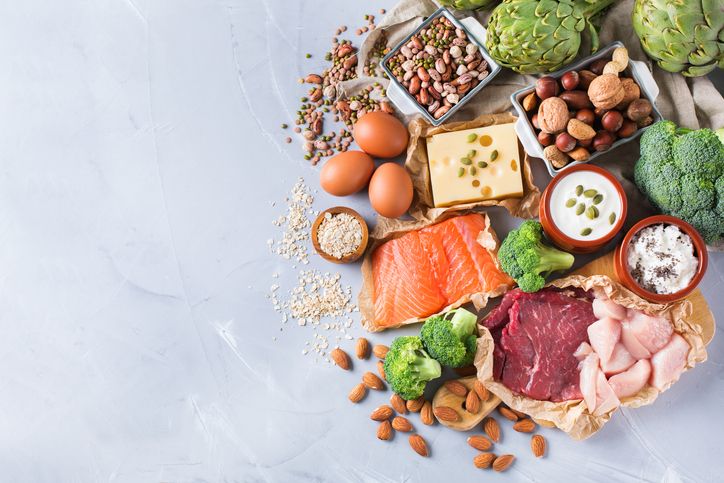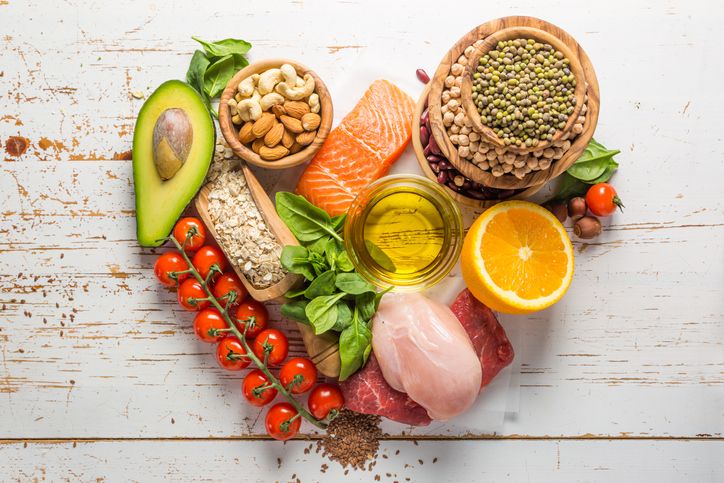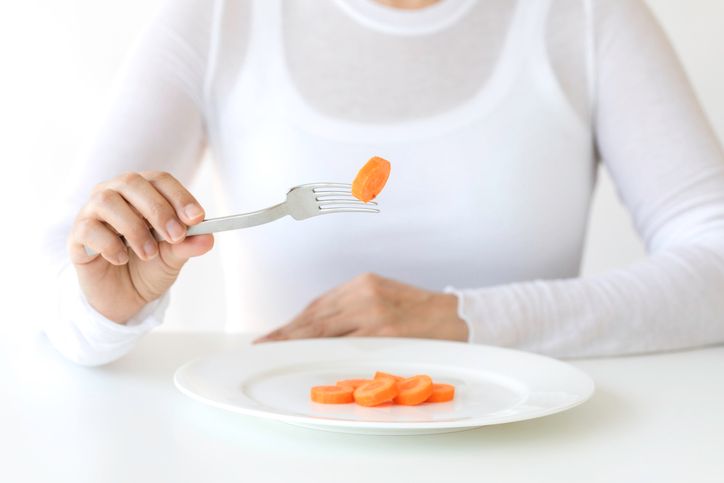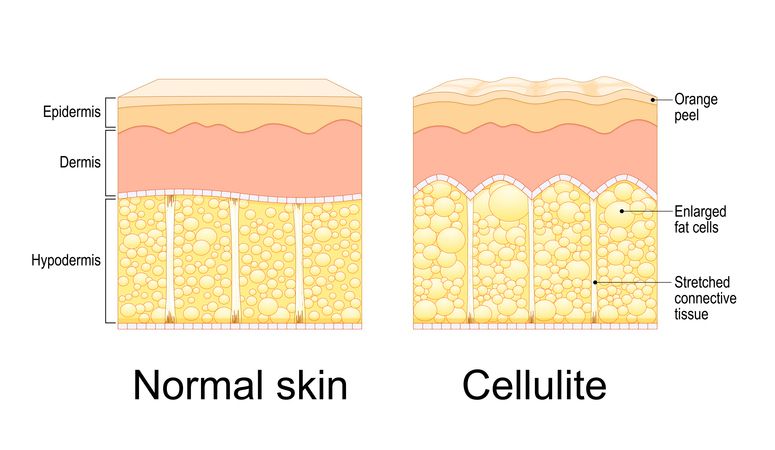
Author: Natalie Ng|Updated: 8 May 2025
Cutting back on calories can help with weight loss, but going too far often works against you. If you drop your daily calorie intake too low, your body starts to react like it’s in trouble. It slows down how many calories you burn, breaks down muscle mass for energy, and holds onto fat. That makes it harder to keep losing weight, and harder to keep the weight off. You might feel weak, get irritated more easily, or notice that your sleep and focus start to slip. Eating too few calories also means missing out on key nutrients your body needs to stay healthy. Over time, this can affect your immune system, hormones, and overall health. Instead of focusing only on how many calories you're cutting, it’s better to think about what you’re eating, how often, and how your body feels. Weight loss works best when it's done gradually, with enough food to fuel your day and keep your metabolism steady. The next part will break this down step by step—so you can make better choices that actually help you reach and maintain a healthy weight.

How Extreme Calorie Restriction Affects Your Body

1. Your Body Slows Down
When you cut your daily calorie intake too much, your body tries to protect itself. It burns fewer calories to save energy. This means your metabolism slows, which can make it harder to lose weight—even if you eat fewer calories than before.
2. You Lose Muscle, Not Just Fat
Your body starts using muscle mass for energy when there isn’t enough food coming in. Losing muscle lowers the number of calories your body burns at rest. Over time, this makes it easier to gain weight back, even on a lower calorie intake.
3. Hormones Get Thrown Off
Eating too few calories can mess with your hormones. Your body may produce less of the hormones that help control hunger and mood. You might feel more tired, more hungry, and less able to concentrate.
4. You Don’t Get Enough Nutrients
Cutting calories too far usually means you miss out on key nutrients. Your body needs enough protein, vitamins, and minerals to support your immune system, energy levels, and brain function. A very low calorie intake can lead to health problems if it continues over time.

Physical Health Risks of Crash Dieting

1. Muscle Loss Weakens Your Body
When you eat too few calories, your body starts using muscle mass for fuel. This loss lowers your strength and reduces your ability to burn calories throughout the day. Less muscle also means a slower metabolism, which can make it harder to maintain weight or lose body fat.
2. Bones Become More Fragile
Crash diets don’t provide enough calcium, protein, or vitamin D, which are needed to support bone strength. Over time, this can lead to weaker bones and a higher risk of fractures, especially if your food intake stays low for a long period.
3. Weakened Immune System
A low calorie intake means your body doesn’t get the nutrients it needs to fight off illness. That includes vitamins like A, C, and E, plus protein and healthy fats. If you often get sick or take longer to recover, your diet may not be meeting your nutritional needs.
4. Heart and Electrolyte Issues
Severe calorie restriction affects your heart. It can disrupt your heart rhythm and lead to low blood pressure. You may also develop electrolyte imbalances, which are dangerous and can cause muscle cramps, irregular heartbeat, or even fainting.
5. Poor Digestive Health
Low food intake slows your digestion. Many people on crash diets struggle with constipation and bloating. Your gut needs enough fiber, water, and calories to function well. Without them, your digestive system becomes sluggish.
6. Risk of Organ Damage
If your calorie intake stays too low, your body may begin using tissue from vital organs for energy. This includes the liver, kidneys, and even the heart. Without enough protein, wounds take longer to heal, and the risk of injury increases.
7. Hormonal Disruptions
Eating too few calories can throw off your hormones. For women, this may mean irregular periods or fertility problems. For everyone, hormonal shifts can affect energy, focus, and sleep. Hormones control many body functions, so any imbalance can have wide effects.
Book Now to Experience
S6 Body Sculpting Treatment
1 Minute Self-Registration
Date should not be before minimal date

Mental and Emotional Impact of Severe Food Restriction

1. Mood Swings and Low Energy
When you don’t eat enough, your brain doesn’t get the fuel it needs. This can lead to mood swings, tiredness, and feeling irritable. Your body needs a steady flow of energy from your daily calorie intake to stay focused and balanced throughout the day.
2. Anxiety and Depression
A diet that’s too low in calories can increase stress and anxiety. Over time, it may even trigger symptoms of depression. This happens when your brain lacks essential nutrients like omega-3 fats, B vitamins, and amino acids that support mental health.
3. Obsession With Food
Severe food restriction often leads to constant thoughts about food. You might find yourself counting calories all day or feeling guilty after meals. This kind of mindset can develop into disordered eating patterns that are hard to break.
4. Binge Eating and Emotional Overload
The stress from always trying to eat fewer calories can lead to episodes of overeating. This can feel like a loss of control and often leads to guilt, creating a harmful cycle of restriction and bingeing. This pattern can affect your relationship with food and your body.
5. Social Withdrawal
Eating out or spending time around food becomes stressful when you’re on a restrictive diet. You may avoid social events to control your food intake, which can lead to feeling isolated. Over time, this distance can affect your relationships and your quality of life.
6. Long-Term Mental Health Effects
Even if you stop restricting calories, the mental effects can linger. It may take time to rebuild a healthy relationship with food. Long-term restriction increases the risk of eating disorders, and recovery often requires support from a healthcare professional.

Why Most Low-Calorie Diets Lead to Weight Regain
1. Slower Metabolism After Weight Loss
When your calorie intake drops too low for too long, your body adjusts by using fewer calories to function. This slows your metabolism. Even basic activities like walking or sitting burn fewer calories than before. Once you stop the diet, your slower metabolism makes it easier to gain weight—even if you don’t eat many calories.
2. Hormonal Changes Increase Hunger
Low-calorie diets affect hormones that control hunger and fullness. Leptin, the hormone that helps you feel full, decreases. Ghrelin, the hormone that makes you feel hungry, increases. This shift makes you want to eat more and feel less satisfied after meals, especially if you try to return to your regular food intake.
3. More Fat Storage
After a crash diet, your body becomes better at storing body fat. It does this to protect against future drops in calorie intake. This survival response makes weight regain more likely, even if your food intake still feels controlled.
4. Muscle Loss Lowers Calorie Burn
Losing weight too quickly often leads to a loss of muscle mass. Since muscle burns more calories than fat, your body burns less energy each day. If your protein intake was too low during the diet, this effect is even stronger. That’s why many people who lose weight fast struggle with weight maintenance.
5. Mental Burnout and Loss of Motivation
Low-calorie diets are hard to stick to. Strict rules and low energy can lead to emotional eating or giving up completely. This often leads to binge eating and undoing the weight lost. Calorie counting apps and rigid food tracking might help short term, but they rarely support long-term weight loss maintenance.
6. Rebound Weight Gain
Once the diet ends, people often return to old habits. Eating more calories after a period of restriction leads to fast weight gain. In many cases, people regain more than their starting weight, starting the cycle all over again.
This cycle of weight loss and weight regain is known as yo-yo dieting. It’s common with low-calorie diets that ignore realistic food intake, gradual weight loss, and sustainable weight management strategies.

Building a Sustainable Approach to Weight Management
1. Make Gradual Changes
Instead of cutting your daily calorie intake all at once, start with small changes you can stick to. Swapping high calorie foods for healthier options or adjusting portion sizes helps create a steady calorie deficit without putting stress on your body. Gradual weight loss is easier to maintain and less likely to lead to weight regain.
2. Eat Balanced Meals
Every meal should include protein, fiber, and healthy fats. This helps control blood sugar, supports lean body mass, and keeps you full for longer. Balanced meals also make it easier to manage your calorie intake without relying on strict rules or calorie tracking apps.
3. Use Portion Control
Learning what portion sizes look like helps you eat fewer calories without feeling deprived. Use smaller plates, measure your food, or follow simple cues like eating until you’re about 80% full. This supports weight management without needing to count every calorie.
4. Stick to Regular Meals
Skipping meals often leads to eating more later. Eating every 3 to 4 hours can prevent cravings and support stable energy levels throughout the day. Regular meals also make it easier to track your food intake and stick to your weight loss program.
5. Plan Ahead
Planning your meals makes it easier to avoid processed foods, empty calories, and impulsive choices like potato chips or sugary drinks. Stock your kitchen with foods that support a healthy diet, like vegetables, chicken breast, and whole grains. Keeping healthy snacks ready can also prevent emotional eating.
6. Focus on Daily Habits
Sustainable weight loss isn’t about short-term diets. It’s about building habits you can live with. Start by adding one or two new habits each week, like drinking more water or reading food labels before buying packaged snacks. These small changes make a big difference over time.
A sustainable weight loss strategy should fit your life. Whether you have a physically demanding job or a more sedentary routine, the key is to work with your body, not against it. Focus on progress, not perfection—and aim for consistency over strict rules.
Book Now to Experience
S6 Body Sculpting Treatment
1 Minute Self-Registration
Date should not be before minimal date

Creating Healthy Habits That Last a Lifetime

1. Start Small and Stay Consistent
Lasting changes begin with small, daily actions. Focus on one habit at a time—like adding vegetables to lunch or going for a short walk after dinner. Over time, these simple steps become part of your routine. This approach supports sustainable weight loss without overwhelming you.
2. Build a Routine That Fits Your Life
Choose habits that work with your schedule. If mornings aren’t your strong point, schedule workouts later in the day. If you often eat out, focus on learning how to choose meals that support your calorie goals. Weight management is easier when it doesn’t feel like a chore.
3. Keep Nutritious Foods Within Reach
Having healthy food options at home makes it easier to avoid high calorie snacks and processed foods. Prepare meals in advance, pack healthy lunches, and keep snacks like fruit, yogurt, or boiled eggs ready to go. This helps manage food intake without relying on willpower alone.
4. Track Progress Without Obsessing
You don’t have to count every calorie or weigh yourself every day. Keep a simple food diary or notice how your clothes fit. Use a calorie calculator now and then to check your overall intake. These small check-ins help you stay on track without adding stress.
5. Focus on Consistency, Not Perfection
No one eats perfectly all the time. If you miss a workout or eat more calories than planned, just go back to your routine at the next meal. One choice won’t undo your progress. Long-term success comes from sticking to healthy eating and movement patterns most of the time—not every single day.
Building habits that support healthy weight takes time, but it’s worth it. The goal is weight loss that you can maintain, without cutting too many calories or creating stress around food.

Support Your Weight Loss Journey with S6
How S6 Treatment Works with Calorie Control
Managing your calorie intake to lose weight is one of the most effective ways to lower body fat. But sometimes, even with a steady calorie deficit, certain areas like the belly, thighs, or arms hold onto fat longer than others. This is where the S6 Body Sculpting Treatment can help.
The treatment uses low-energy bio-laser technology to break down fat cells just beneath the skin. These cells release stored fatty acids, which are then cleared from your body through your lymphatic system. The process is supported by vacuum suction massage, which helps increase circulation and speeds up fat metabolism.
Supports Visible Fat Reduction
S6 doesn’t replace healthy eating, but it enhances what you’re already doing. If you’ve been lowering your daily calorie intake, tracking your food intake, and following a structured weight loss program, this treatment can help improve definition in specific areas. It focuses on seven common problem zones: arms, waist, belly, thighs, lower buttocks, calves, and back—areas where spot reduction from diet and exercise alone can be frustrating.
Safe, Comfortable, and Non-Invasive
S6 is completely non-surgical. There are no needles, no medications, and no need to take time off. Most people return to work or their daily activities immediately after each session. It’s suitable for people with different body types, and each treatment plan is personalized based on your goals and fat distribution.
Helps Maintain Results
By speeding up metabolism and improving lymphatic drainage, S6 may also help with weight loss maintenance—especially when used alongside other habits like reading nutrition labels, planning meals, and staying physically active. The bio-laser also supports collagen production, which helps prevent sagging by keeping the skin firm as fat is reduced.
What to Expect from Your Session
Each session begins with a consultation and analysis of your body’s fat distribution. After confirming your target area, the bio-laser is applied, followed by vacuum suction massage. A full course includes about 10 to 12 sessions, with a one-month break between each to allow your body to process the fat naturally.
Book Your S6 Body Sculpting Session
If you’ve been eating fewer calories, watching your portion sizes, and still find it hard to lose fat in certain areas—S6 can help. This non-invasive treatment supports your existing efforts and brings visible results faster.
Book the S6 Body Sculpting Treatment today and take one more step toward reaching your healthy weight goals—safely, comfortably, and effectively.Book Now to Experience
S6 Body Sculpting Treatment
1 Minute Self-Registration
Date should not be before minimal date
FAQ
How do I calculate my daily calorie intake to lose weight?
Your daily calorie intake depends on factors like age, gender, height, current weight, and physical activity level. To estimate how many calories you need to lose weight, start by calculating your basal metabolic rate (BMR), which is the number of calories your body burns at rest. Then adjust for your activity level to get your total daily energy expenditure (TDEE). From there, create a calorie deficit of 300 to 500 calories per day for gradual weight loss. You can use a reliable calorie calculator to help with this process.
Is it better to focus on calorie counting or portion control?
Both methods can work, and it depends on your habits and goals. Calorie counting gives you a clearer view of your food intake and helps you manage high calorie foods or track macronutrients like protein intake. Portion control is a simpler method that helps you eat fewer calories without tracking everything. Many people use nutrition labels to stay aware of calories while still practicing portion control for a more flexible routine.
Can eating too few calories stop me from losing weight?
Yes. If your caloric intake drops too low, your body may slow its metabolism and try to conserve energy. This response can make it harder to lose body fat and may even lead to weight gain once your eating returns to normal. Very low calorie intake can also cause muscle loss, lower energy levels, and disrupt your hormones. A better approach is to create a moderate calorie deficit while still meeting your nutritional needs.
Are liquid calories something I should be concerned about?
Yes. Drinks like soda, sweetened coffee, alcohol, and some smoothies can contain many calories without making you feel full. These liquid calories often go unnoticed, but they raise your overall food intake and can slow weight loss progress. Reducing sugary drinks is one of the easiest ways to lower your daily calorie intake and avoid consuming too many calories without realizing it.
How much exercise do I need if I'm eating fewer calories?
Regular exercise helps support weight loss, especially when combined with a lower daily calorie intake. A mix of strength training and cardio three to five times per week is a good starting point. Strength training helps preserve lean body mass, which keeps your metabolism stable while you're in a calorie deficit. If you have a physically demanding job, your activity level may already be helping support your calorie goals.
Recommended Articles
COPYRIGHT© NEW BEAUTY MANAGEMENT LIMITED 2025. ALL RIGHT RESERVED.




